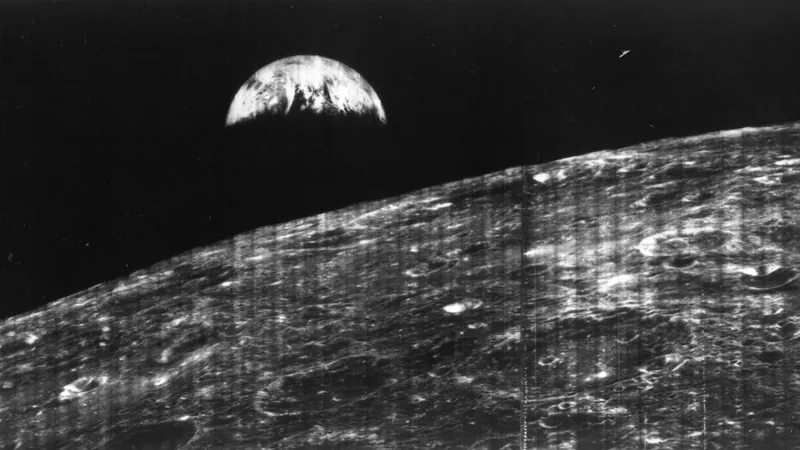
Unveiling the Historic 'Earthrise': The First Glimpse of Our Planet from the Moon!
2025-08-31
Author: Jia
A Milestone Moment in Space Exploration
Fifty-nine years ago, humanity was gifted its first dramatic view of Earth from lunar heights. On August 23, 1966, a grainy black-and-white photograph captured our blue planet as a delicate crescent hanging above the moon's horizon. This pivotal image was entirely unplanned and came courtesy of NASA's Lunar Orbiter 1.
Lunar Orbiter 1: The Trailblazer of Lunar Imaging
Launched on August 10, 1966, aboard an Atlas-Agena D rocket from Cape Canaveral, Lunar Orbiter 1 made history as the first U.S. spacecraft to enter a stable orbit around the moon. Originally designed for a cartographic mission to identify potential landing sites for future Apollo missions, it delivered unprecedented images of the lunar surface, far superior to anything that could be seen from the largest telescopes on Earth.
Innovation Behind the Lens
The Orbiter's camera, a product of Eastman Kodak, was an ingenious piece of technology. It utilized an automated system to develop exposed film, scan theimages, and beam them back to Earth. This same camera technology had been previously employed in U.S. reconnaissance satellites during the Cold War.
A Dramatic Departure
After 76 days of orbiting the moon and sending back spectacular images, Lunar Orbiter 1 met its final fate on October 29, 1966, when it was deliberately commanded to crash into the lunar surface.
A Precursor to 'Earthrise'
The historic crescent view of Earth was captured at 16:35 GMT during the spacecraft's 16th orbit, just before it ventured into the shadows of the moon's far side. While it set the stage, it wasn’t until Christmas Eve 1968, during the Apollo 8 mission, that astronaut Bill Anders snapped the mesmerizing 'Earthrise' photo, which became an iconic cultural touchstone, capturing the world's imagination.
A Legacy of Exploration
The legacy of Lunar Orbiter 1 lives on as it opened the door for a new era of space exploration and expanded our understanding of not just the moon, but our precious home planet. As we reflect on this monumental moment, it serves as a reminder of how far we have come in our quest to understand the universe.



 Brasil (PT)
Brasil (PT)
 Canada (EN)
Canada (EN)
 Chile (ES)
Chile (ES)
 Česko (CS)
Česko (CS)
 대한민국 (KO)
대한민국 (KO)
 España (ES)
España (ES)
 France (FR)
France (FR)
 Hong Kong (EN)
Hong Kong (EN)
 Italia (IT)
Italia (IT)
 日本 (JA)
日本 (JA)
 Magyarország (HU)
Magyarország (HU)
 Norge (NO)
Norge (NO)
 Polska (PL)
Polska (PL)
 Schweiz (DE)
Schweiz (DE)
 Singapore (EN)
Singapore (EN)
 Sverige (SV)
Sverige (SV)
 Suomi (FI)
Suomi (FI)
 Türkiye (TR)
Türkiye (TR)
 الإمارات العربية المتحدة (AR)
الإمارات العربية المتحدة (AR)